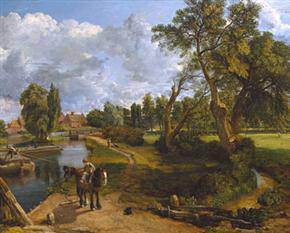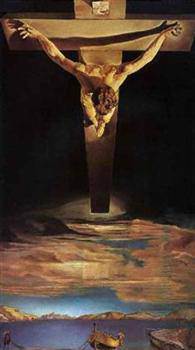
John Constable
Flatford Mill (1816-17)

J.M.W. Turner
Norham Castle, Sunrise (circa 1845)
‘Romantics’, Tate Britain’s Clore Galleries re-opened to the public Romantics, part of the BP British Art Displays, features over 170 key paintings, prints and photographs spread over nine thematic rooms exploring the origins, inspirations and legacies of British Romantic art. 9 August 2010 – 31 December 2012]]>
Source: Tate Gallery
Highlights of the new display are eight spectacular hand-coloured etchings by William Blake (1757-1827) which were acquired by Tate for the nation last year. Found hidden in a railway timetable amongst a box of secondhand books in the 1970s, these rare works are images from Blake’s now famous series of illuminated books. Originally left to Blake’s widow, the prints were gifted to a friend, and their location was unknown until their remarkable rediscovery.
The new etchings, which have been printed, painted and annotated with lines of poetry by Blake, will feature alongside works of other Romantic artists from the turn of the nineteenth century, including John Constable, John Linnell and Samuel Palmer. During this period, the ideal of the artist as an enlightened and inspired genius brought with it an interest in the power of visions, exacerbated by a trend for gothic literature and art. This freedom brought them the opportunity to experiment with imagery and subject matter to create pictures of astonishing emotional intensity. The rooms in the display explore how the creative power of the human mind and the relationship to the natural world were of great significance to a host of artists, whose works reflect these concerns in strikingly different ways. Romantics shows how these fantastical images could depict idealised alternatives to the material world, such as in John Constable’s luscious Flatford Mill (1816-17); or mysterious and unsettling realms, seen in Richard Dadd’s The Fairy Feller’s Master-Stroke (1855-64).
The Clore displays also feature a new room of late works by J.M.W Turner. Characterised by the experimental use of colour and the depiction of light for which Turner is now so renowned, these paintings from the second half of the artist’s career were heavily criticised at the time. Undeterred by public opinion, however, Turner heroically followed his own impulses like a true romantic, continuing to exhibit the unique and challenging work which we celebrate today. The display features masterpieces from the Tate Collection including Norham Castle, Sunrise (circa 1845) and Sun Setting over a Lake (circa 1840).
Two rooms in the display explore the legacy of The Romantics. The first of these presents the Neo-Romantics of the mid twentieth century, including artists such as Graham Sutherland and Paul Nash, who looked back to Romantic British visionaries such as William Blake and Samuel Palmer. The second will explore landscape photography of the last forty years which parodies or plays off the Romantic tradition.
Follow us on:

